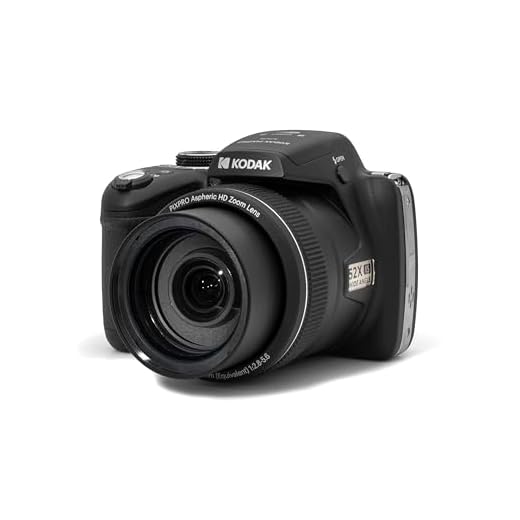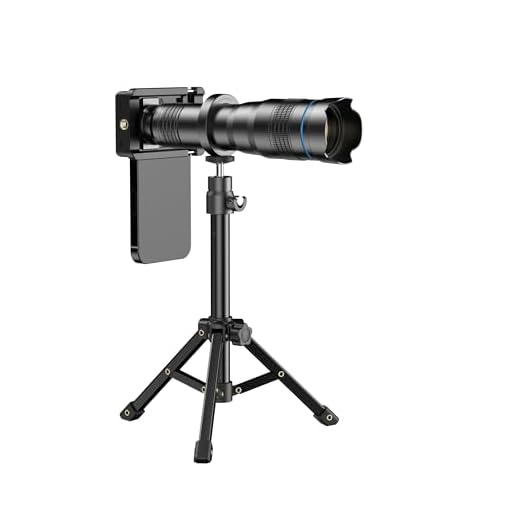




With the advancement of smartphone technology, many people have shifted to using their phones as their primary camera for capturing memories. However, there is still a debate on whether old digital cameras are better than phones when it comes to photography.
Old digital cameras, such as DSLRs and point-and-shoot cameras, have certain advantages over smartphones in terms of image quality, optical zoom capabilities, and manual controls. These cameras often have larger sensors and better lenses, allowing for sharper images with more details.
On the other hand, smartphones offer convenience and portability, making them a popular choice for everyday photography. The quality of smartphone cameras has improved significantly over the years, with many flagship phones now featuring multiple lenses and advanced computational photography techniques.
In conclusion, while old digital cameras may have certain advantages in terms of image quality and control, smartphones have become a more practical and versatile option for most people. The choice between the two ultimately depends on personal preferences and the intended use of the camera.
Are Old Digital Cameras Better than Phones
When it comes to capturing high-quality images, old digital cameras still have some advantages over smartphones. While smartphones have made significant advancements in camera technology, old digital cameras typically have larger image sensors and better optical zoom capabilities. This means that old digital cameras can often produce sharper and more detailed images, especially in low-light conditions.
Additionally, old digital cameras often offer more manual controls and settings for experienced photographers who want more creative control over their photos. They also tend to have longer battery life and better ergonomics for extended shooting sessions.
However, smartphones have their own advantages, such as convenience, portability, and the ability to instantly share photos online. They also come with a wide range of editing and filtering options built into their camera apps, making it easier for users to enhance and customize their photos on the go.
| Old Digital Cameras | Smartphones |
|---|---|
| Larger image sensors | Convenience and portability |
| Better optical zoom | Instant photo sharing |
| More manual controls | Built-in editing tools |
| Longer battery life | Editing and filtering options |
In conclusion, while old digital cameras may have some advantages over smartphones in terms of image quality and control, smartphones are still a popular choice for everyday photography due to their convenience and versatility. The best camera ultimately depends on the user’s needs and preferences.
Image Quality Comparison
When it comes to image quality, old digital cameras usually have larger sensors and better optics compared to smartphones. This results in sharper images with more accurate colors and better dynamic range. Additionally, digital cameras often offer more manual controls, allowing photographers to fine-tune settings to achieve the desired results.
On the other hand, modern smartphones have made significant advancements in camera technology, with some flagship models featuring multiple lenses, sophisticated image processing algorithms, and AI enhancements. While they may not match the image quality of dedicated cameras in all scenarios, smartphones are more than capable of capturing stunning photos for everyday use.
In conclusion, while old digital cameras may have the edge in terms of image quality, smartphones have closed the gap and offer convenience and versatility that make them a popular choice for casual photography.
Zoom and Lens Features
When comparing old digital cameras to modern smartphones, one of the key differences lies in the zoom and lens features. Digital cameras typically have optical zoom capabilities, allowing users to zoom in on subjects without losing image quality. On the other hand, most smartphones rely on digital zoom, which can result in pixelation and decreased image quality when zooming in.
Optical Zoom vs. Digital Zoom
Optical zoom works by physically adjusting the lens to zoom in on a subject, resulting in clear and sharp images even when zoomed in. Digital zoom, on the other hand, simply enlarges the existing image, leading to a loss of detail and quality.
Furthermore, digital cameras often come with a variety of lens options, such as wide-angle or macro lenses, allowing users to capture different types of shots with ease. Smartphones, while improving in this area, still lack the versatility and quality of dedicated camera lenses.
| Feature | Digital Cameras | Smartphones |
|---|---|---|
| Optical Zoom | Yes | No (or limited) |
| Lens Options | Wide range available | Limited |
| Zoom Quality | Higher quality | Lower quality |
Low Light Performance
When it comes to low light performance, old digital cameras often outperform smartphones. Digital cameras typically have larger image sensors and better lenses, allowing them to capture more light in challenging lighting conditions. This results in less noise and better image quality compared to smartphone cameras, especially in dimly lit environments.
Additionally, digital cameras usually offer manual controls for adjusting settings like ISO, aperture, and shutter speed, giving users more flexibility in optimizing their shots in low light. On the other hand, smartphone cameras rely heavily on software processing to compensate for their smaller sensors, which can lead to grainy images and loss of detail in low light situations.
Overall, if you prioritize low light performance in your photography, investing in an old digital camera might be a better choice than relying solely on your smartphone.
Manual Controls and Settings
One of the key advantages of old digital cameras over phones is the manual controls and settings they offer. Old digital cameras typically come with a range of manual controls that allow users to adjust settings such as aperture, shutter speed, ISO, and white balance. These manual controls give photographers more creative freedom and allow them to fine-tune their shots to achieve the desired look.
Aperture, Shutter Speed, and ISO
With manual controls, photographers can adjust the aperture to control the amount of light entering the camera, the shutter speed to control the motion blur in a shot, and the ISO to adjust the camera’s sensitivity to light. This level of control is essential for capturing high-quality images in various lighting conditions.
White Balance and Creative Filters
Old digital cameras also often offer manual white balance settings, allowing users to adjust the color temperature of their photos to accurately represent the scene’s colors. Additionally, some old digital cameras come with creative filters that can be applied to images in-camera, offering photographers more ways to experiment with their shots.
Battery Life and Storage
One of the key advantages of old digital cameras over phones is their battery life. Most digital cameras use dedicated rechargeable batteries that can last for hundreds of shots on a single charge. In contrast, smartphone cameras drain the phone’s battery quickly, especially when using features like video recording or image stabilization. This can be a significant drawback when you are out and about and need your phone for other tasks.
Battery Life Comparison
To give you a better idea, here is a comparison between the average battery life of old digital cameras and smartphones:
| Device | Battery Life (shots) |
|---|---|
| Old Digital Camera | 300-500 shots per charge |
| Smartphone | 50-100 shots per charge |
Storage Capacity
Another advantage of old digital cameras is their dedicated storage capacity. Most cameras come with built-in memory or support for removable memory cards, allowing you to store hundreds or even thousands of high-quality photos without worrying about running out of space. In comparison, smartphones have limited internal storage, and although you can expand it with a memory card, it may not be as convenient as having a dedicated camera with ample storage.
Portability and Convenience
One of the key advantages of using a smartphone for photography is its portability. Smartphones are compact and lightweight, making them easy to carry around wherever you go. This means you can capture spontaneous moments and photo opportunities without having to lug around a bulky camera.
Additionally, smartphones offer a high level of convenience. With a smartphone, you always have a camera at your fingertips, ready to capture any moment. This convenience allows you to quickly snap photos without having to worry about carrying a separate camera.
On the other hand, older digital cameras tend to be larger and less portable than smartphones. They require you to carry an extra device, which can be cumbersome and inconvenient. While older digital cameras may offer superior image quality, their lack of portability and convenience can be a significant drawback when compared to the ease of use and accessibility of smartphone cameras.
Overall Durability and Longevity
When it comes to overall durability and longevity, old digital cameras often have the upper hand over smartphones. Most digital cameras are designed to withstand rough handling and adverse conditions, making them more durable than the delicate smartphones of today. The build quality of older digital cameras is usually superior, with metal bodies and sturdy construction that can withstand the test of time.
Furthermore, digital cameras are less likely to become obsolete quickly compared to smartphones, which tend to have a shorter lifespan due to frequent software updates and advancements in technology. This means that investing in an old digital camera can provide you with a reliable device that can last for years to come, capturing high-quality images without the need for constant upgrades.
Cost and Value Considerations
When comparing old digital cameras to modern smartphones, cost and value are important factors to consider. While older digital cameras may be cheaper to purchase upfront, they may not offer the same value as a smartphone in terms of features and versatility.
Initial Cost
Old digital cameras can often be found at a lower price point than the latest smartphones. This can be appealing for those on a tight budget or looking for a more affordable option.
Long-Term Value
However, smartphones offer not only a camera but a range of other features such as communication, internet access, and apps that can add value to your purchase. In the long run, investing in a smartphone may provide more value for your money compared to an old digital camera.
FAQ
Are old digital cameras still better than the cameras on phones?
It depends on the specific models compared. In general, older digital cameras may have better image quality and features such as optical zoom and manual controls compared to phone cameras. However, the convenience and connectivity of phone cameras often make them more practical for everyday use.
Do old digital cameras produce better image quality than modern smartphones?
Old digital cameras can still produce excellent image quality, especially in terms of sharpness and color accuracy. However, modern smartphones have made significant advancements in camera technology, such as larger sensors, computational photography, and AI enhancements, which can sometimes surpass the image quality of older digital cameras.
Are there any advantages to using an old digital camera over a smartphone camera?
Yes, there are advantages to using an old digital camera over a smartphone camera. Old digital cameras may offer better ergonomics for photography enthusiasts, longer battery life, dedicated camera settings, and the ability to use interchangeable lenses for more creative control over the images.
Can old digital cameras compete with the convenience of smartphone cameras?
Old digital cameras may not be as convenient to carry around and use on a daily basis compared to smartphone cameras. Smartphones are always with us, making it easier to capture spontaneous moments. However, for planned photography sessions where image quality and control are important, old digital cameras can still be a viable option.
What are the main factors to consider when choosing between an old digital camera and a smartphone for photography?
The main factors to consider include your photography needs and preferences. If you value image quality, manual controls, and creative possibilities, an old digital camera might be better. If convenience, ease of sharing, and portability are more important, a smartphone camera may be the way to go. It’s also essential to consider the specific features and capabilities of both options to make an informed decision.








